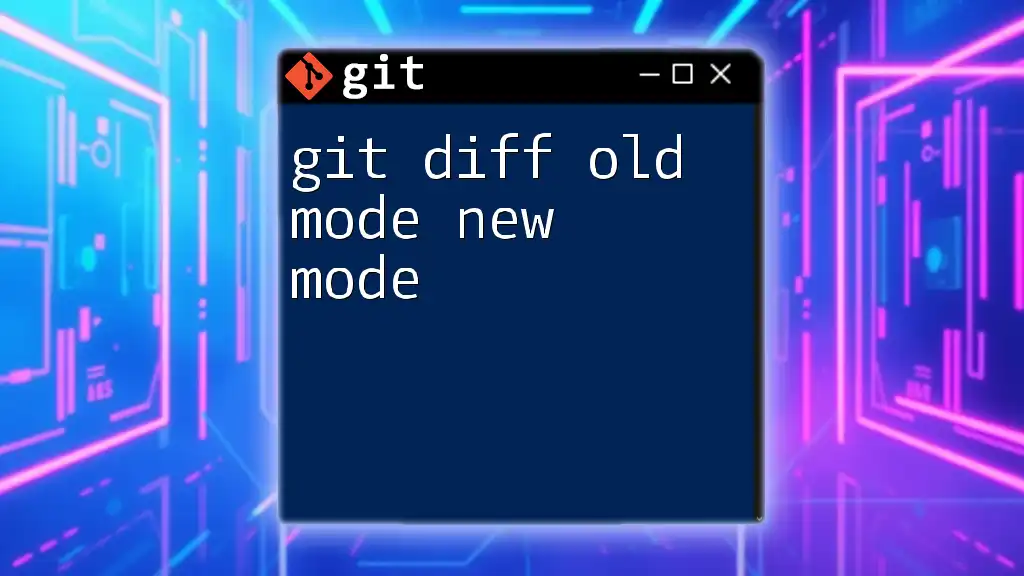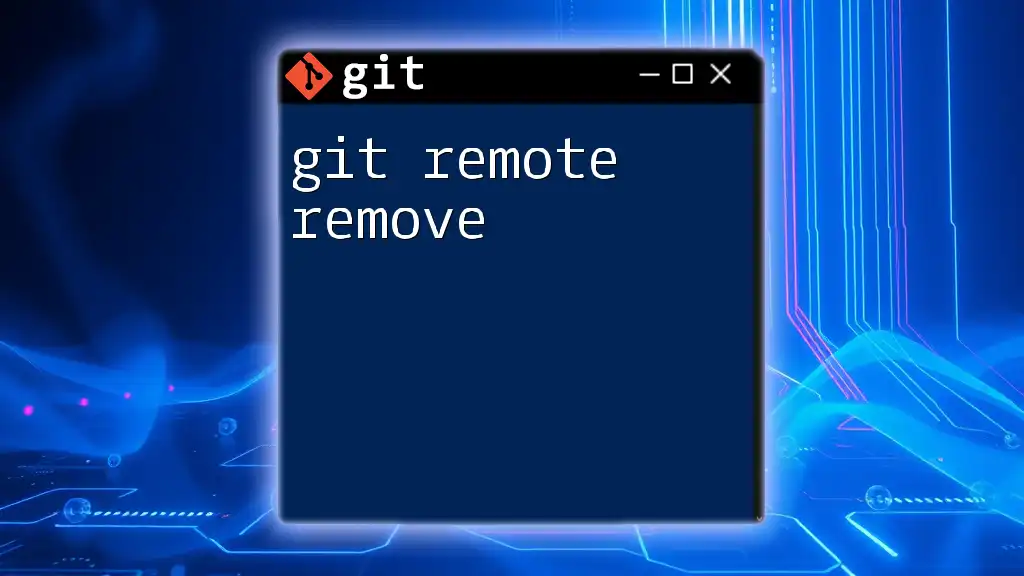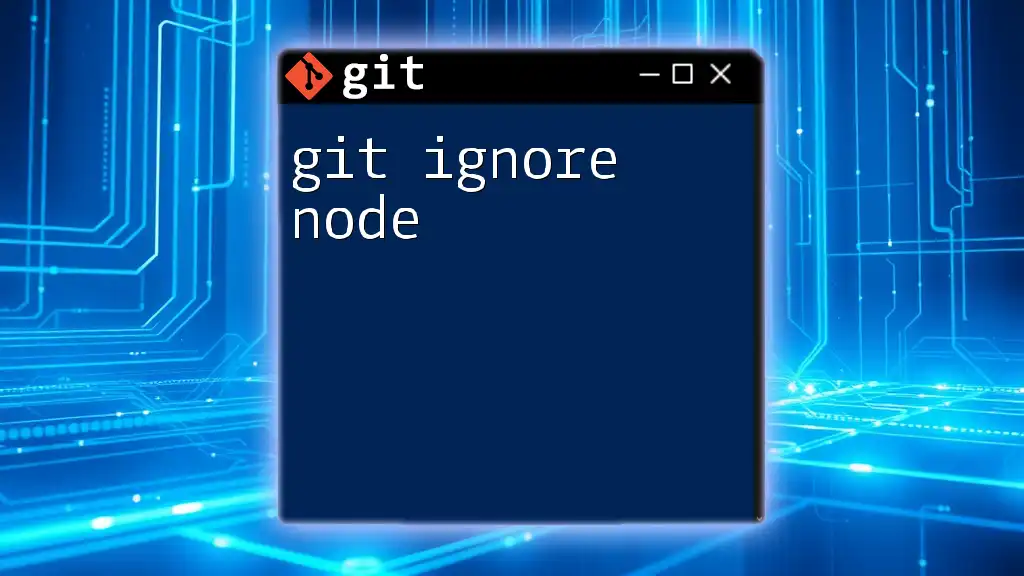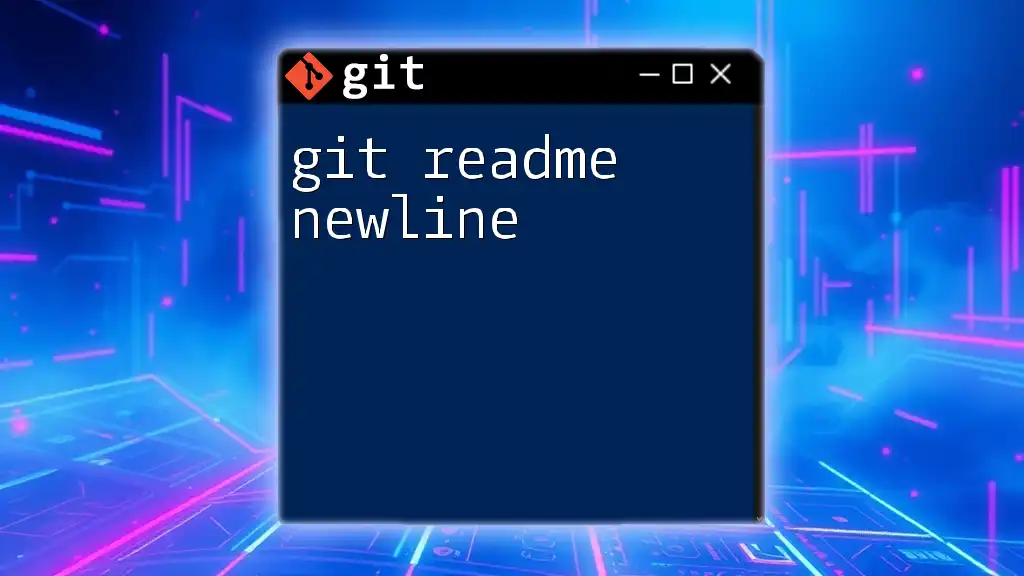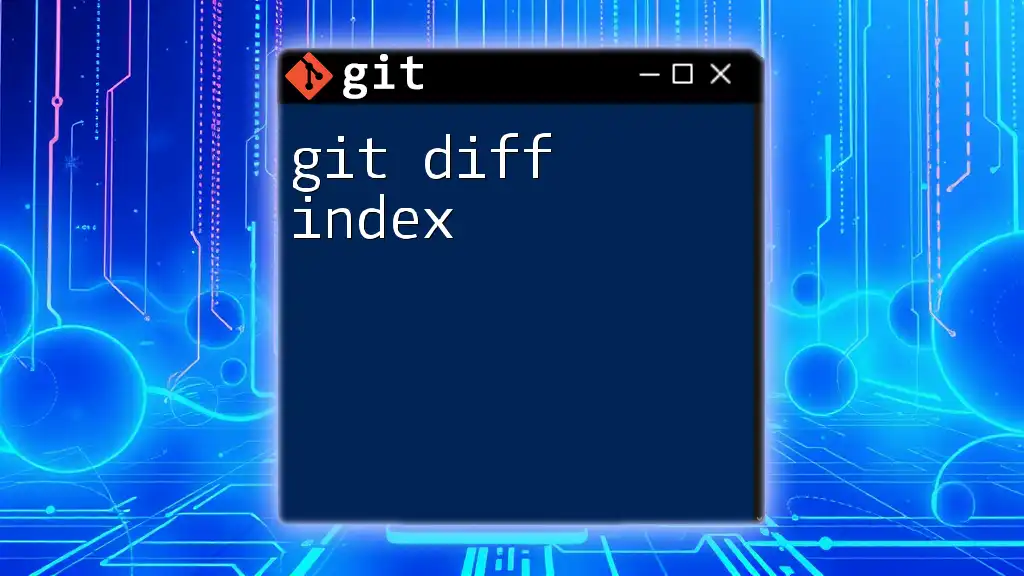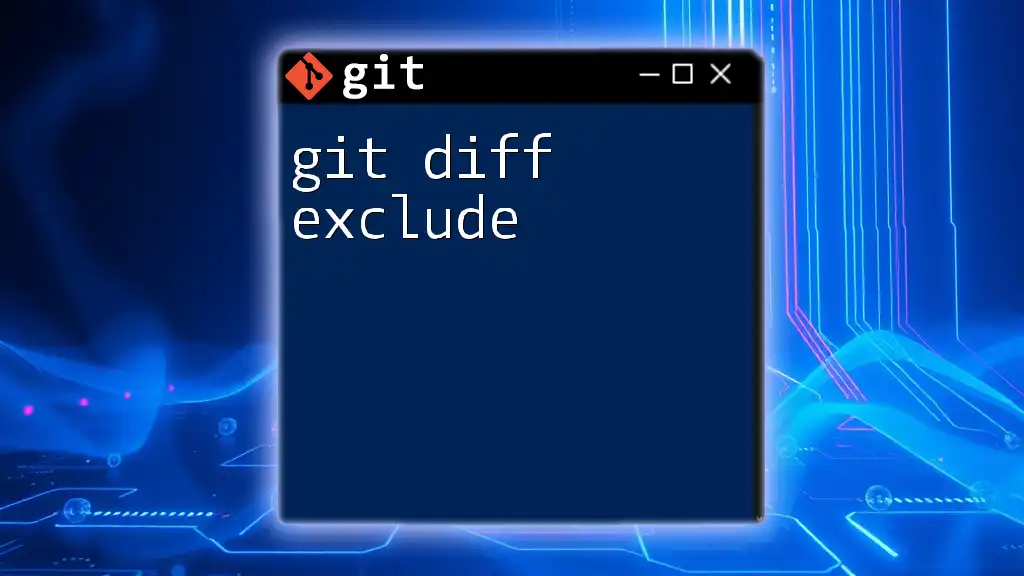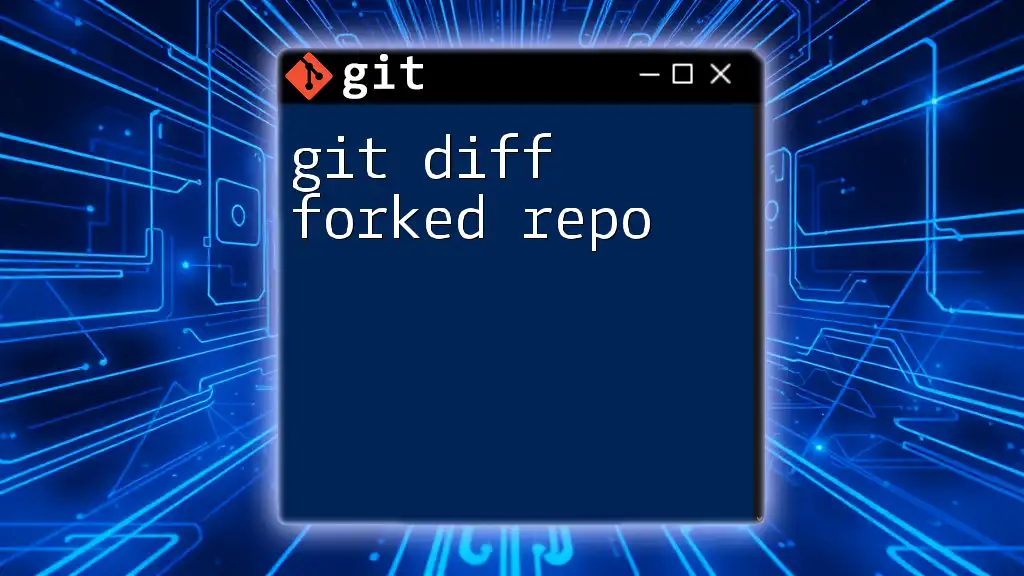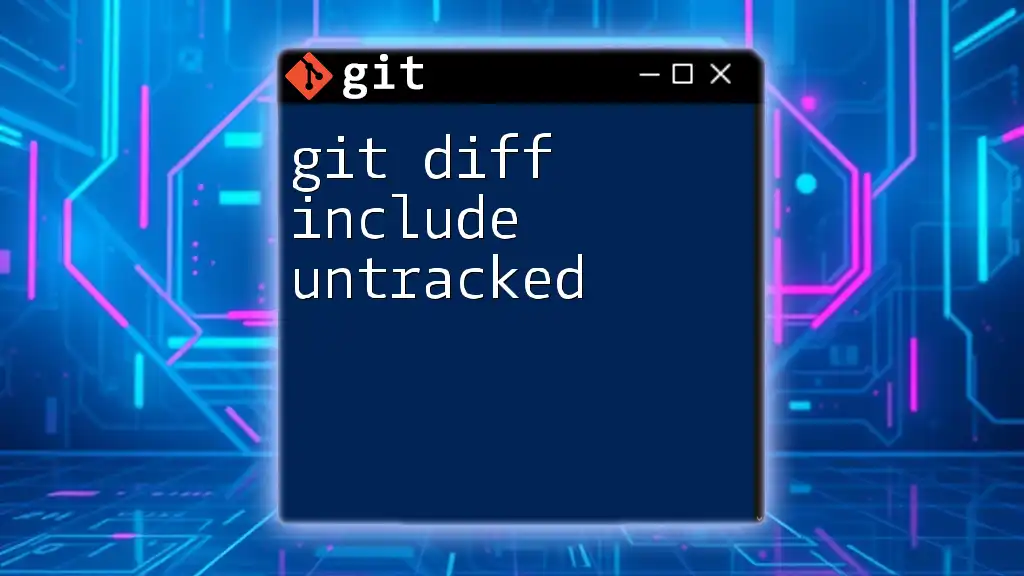The `git diff` command allows you to compare the differences between two versions of your files, where "old mode" refers to a specific commit or state of the files and "new mode" refers to the current or another specific commit/state.
git diff <old_commit> <new_commit>
Understanding Git Diff
What Does Git Diff Do?
The `git diff` command is a powerful tool in Git that allows users to compare differences in files, making it essential for version control. By utilizing `git diff`, you can see what changes have been made between various states in your repository, whether between commits, branches, or even uncommitted modifications.
Benefits of Using Git Diff:
- Simplifying Code Reviews: It helps developers review code changes effectively, ensuring that new additions or alterations align with best practices and project goals.
- Identifying Bugs and Errors: Quickly spotting unintended changes helps in root cause analysis and debugging.
Key Terminology
Mode in Git
In Git, "mode" refers to file attributes that signify different states of a file. These include file deletion, creation, and modification.
Old Mode and New Mode represent the state of a file before and after a change, respectively, particularly regarding file permissions and types.
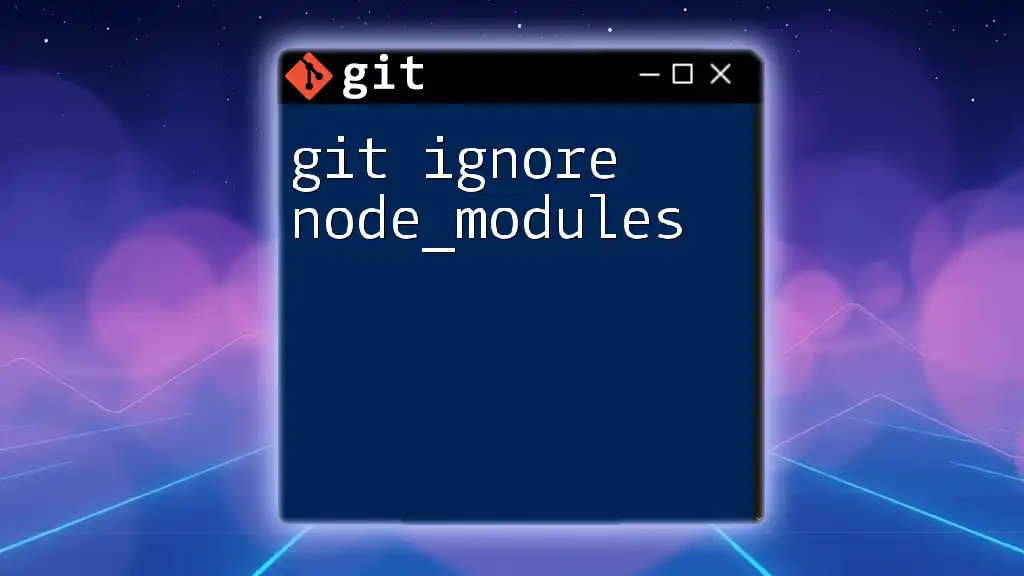
Exploring the Syntax of Git Diff
Basic Usage of Git Diff
The core syntax of the `git diff` command is straightforward, yet powerful. Understanding its structure is crucial for maximizing its potential.
You can use `git diff` in various ways:
git diff
This command shows changes in your working directory compared to the staging area.
git diff <commit>
Here, you compare the current working directory to a specific commit.
git diff <branch>
This version allows you to see changes between the current branch and another branch.
Understanding Modes in Git Diff
Old Mode vs New Mode
Old Mode refers to the previous state of a file before changes were made, while New Mode reflects the current state after the changes.
This distinction is crucial in understanding how permissions or file types have evolved over time in your project.
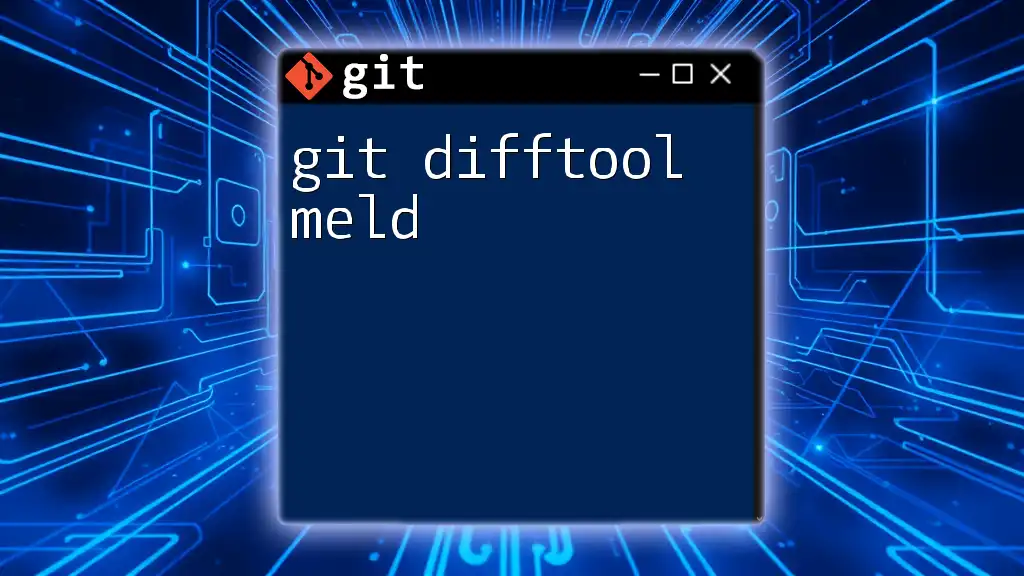
Practical Examples of Git Diff Old Mode New Mode
Inspecting File Changes
Viewing Changes in Old and New Modes
Using `git diff`, you can view various changes in file types and permissions.
Example 1: Checking Changes in File Type To see changes in file types, you can check the output using the `--cached` option, which helps you understand what will be committed.
git diff --cached
Example 2: Tracking Permission Changes Let's say you are examining a file's mode changes through the output:
diff --git a/example.txt b/example.txt
old mode 100644
new mode 100755
This indicates that the file's permission was changed from a regular file (read, write permissions for owner and read for group) to an executable (read, write, and execute permissions for the owner).
Comparing Different Commits
Using Old Mode and New Mode for Commit Comparison
To compare changes directly between specific commits, you can utilize the following command:
Example 3: Comparing Commits with Mode Changes
git diff <commit1> <commit2>
This command will show you the differences in modes and other changes made between the two specified commits.

Advanced Features of Git Diff
Options and Flags
To enhance the functionality of `git diff`, you can leverage various options and flags:
git diff --stat
This provides a summary of changes, displaying how many lines were added or deleted.
git diff --name-only
This command lists only the names of changed files, which is useful for getting a quick overview.
Customizing Output
You can customize the output format to get the information most relevant to your workflow. For instance:
git diff --format=raw
This outputs raw format data, which can be useful for advanced users who want to parse specific details from the output.
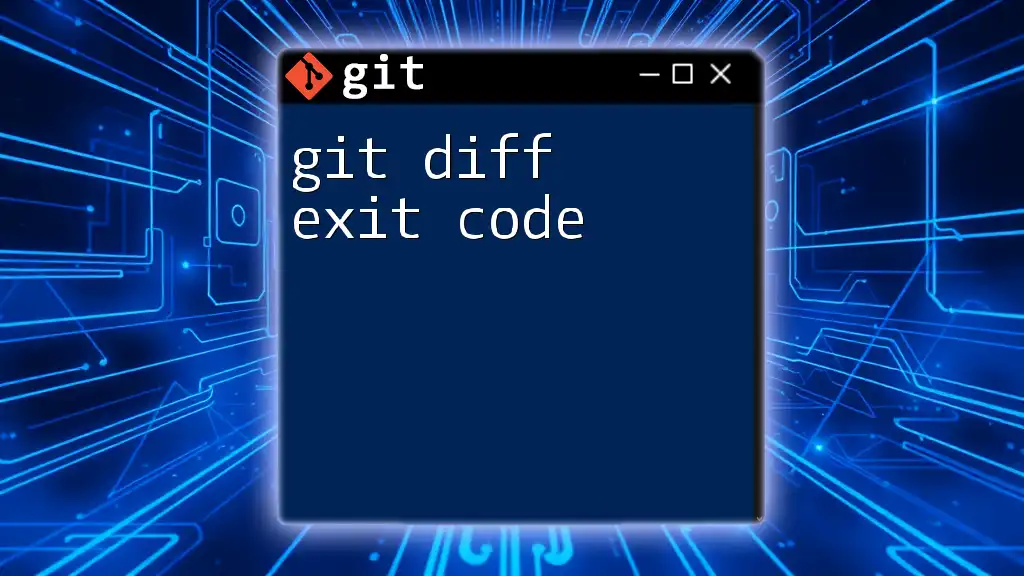
Common Use Cases for Git Diff
When to Use Git Diff Old Mode New Mode
Understanding when to use `git diff` effectively can significantly enhance your workflow. Key scenarios include:
- Code Reviews: Utilizing `git diff old mode new mode` allows reviewers to spot changes and maintain code quality.
- Merging Branches: During merges, checking old and new modes can prevent introducing errors or unwanted changes.
- Debugging: When bugs arise, examining the differences can help you trace back to the specific changes that led to the issue.
Troubleshooting Common Issues
Common problems with `git diff` often stem from confusion over old mode and new mode representations. For instance, if a permission change doesn't display as expected, ensure you're checking the correct commit or branch.

Conclusion
In summary, mastering the `git diff old mode new mode` concept is essential for every Git user. By understanding how to interpret the changes between file states, including those in permissions and types, you empower yourself to perform code reviews, debug issues, and effectively manage your projects. Regular practice with these commands will enhance your skills and confidence in using Git to its fullest potential.
Additional Resources
- Explore the official [Git documentation](https://git-scm.com/doc) for in-depth material.
- Review tutorials and guides for targeted learning on Git commands.
Call to Action
We encourage you to share your own experiences and tips on using `git diff` in your projects. Join the community of learners and enhance collective knowledge around this crucial tool!

